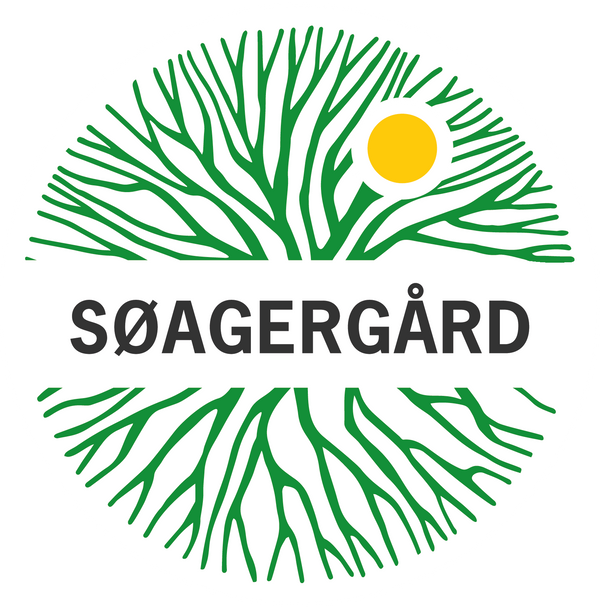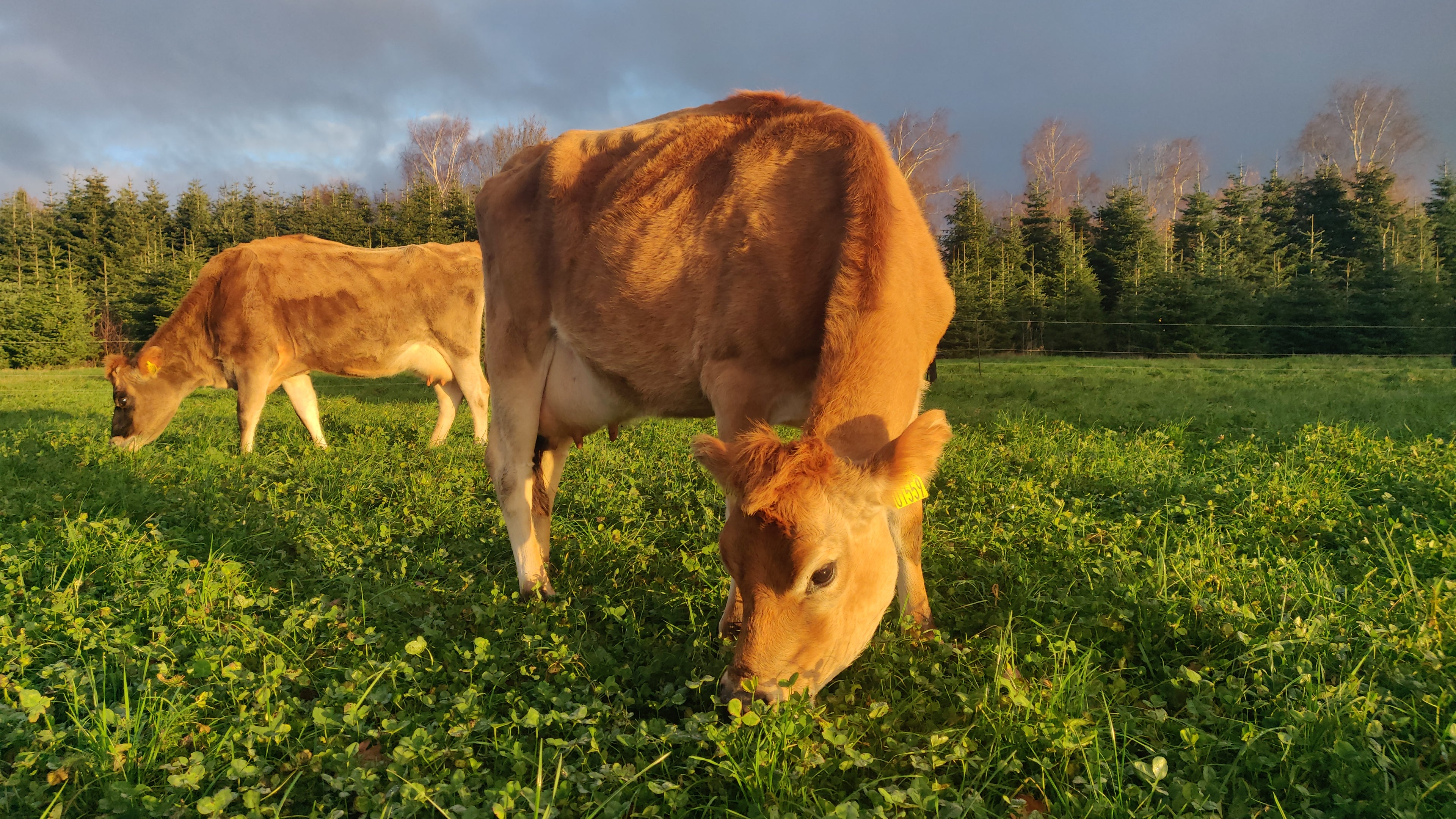
What is Radically Regenerative?
Find out below
Radically Regenerative is... actually regenerative
This may sound a little strange, but it’s become popular to label any kind of non-conventional agriculture as “regenerative”. For example, a large milk producer in Denmark recently labelled its milk as “regenerative”. Looking beyond the bombastic marketing, the producer is simply trialling a slightly different way of keeping cows; in just one of its many dairies. We would say this fleeting trial is neither regenerative nor is it likely that any meaningful amount of milk from that farm is in the cartons on the shelves.
If you do not want to be tricked by slick marketing campaigns that may label their approaches as regenerative, let us explore what regenerative actually means. Compared to the approach of “big farmer”, what we do is radical.
Radically Regenerative restores the animal-plant symbiosis of ecosystems
Our ecosystems evolved symbiotically; with animals, plants, insects, bacteria, fungi (and of course us humans!) contributing to an abundant environment.
In our desire for control and productivity, modernity has broken the symbiosis, creating monocultures and homogeneity of:
- Over-engineered grains, vegetables and forestry (not to mention GMO or transgenic)
- Single-breed animal feeding lots, including “sustainable” fish farms
- Cities and their residents, disconnected from natural cycles
- Thought and ideas to address environmental issues
Opposite to fear-based narratives, we are not pleading that we have the solution to “the end is nigh”. What we have is a workable and demonstrable approach that returns the harmony of nature – while restoring and nourishing the local human communities. It is an approach that empowers us and those around us, helping us make a direct, meaningful change locally.
Image below: The depleted fields we started with, in 2020
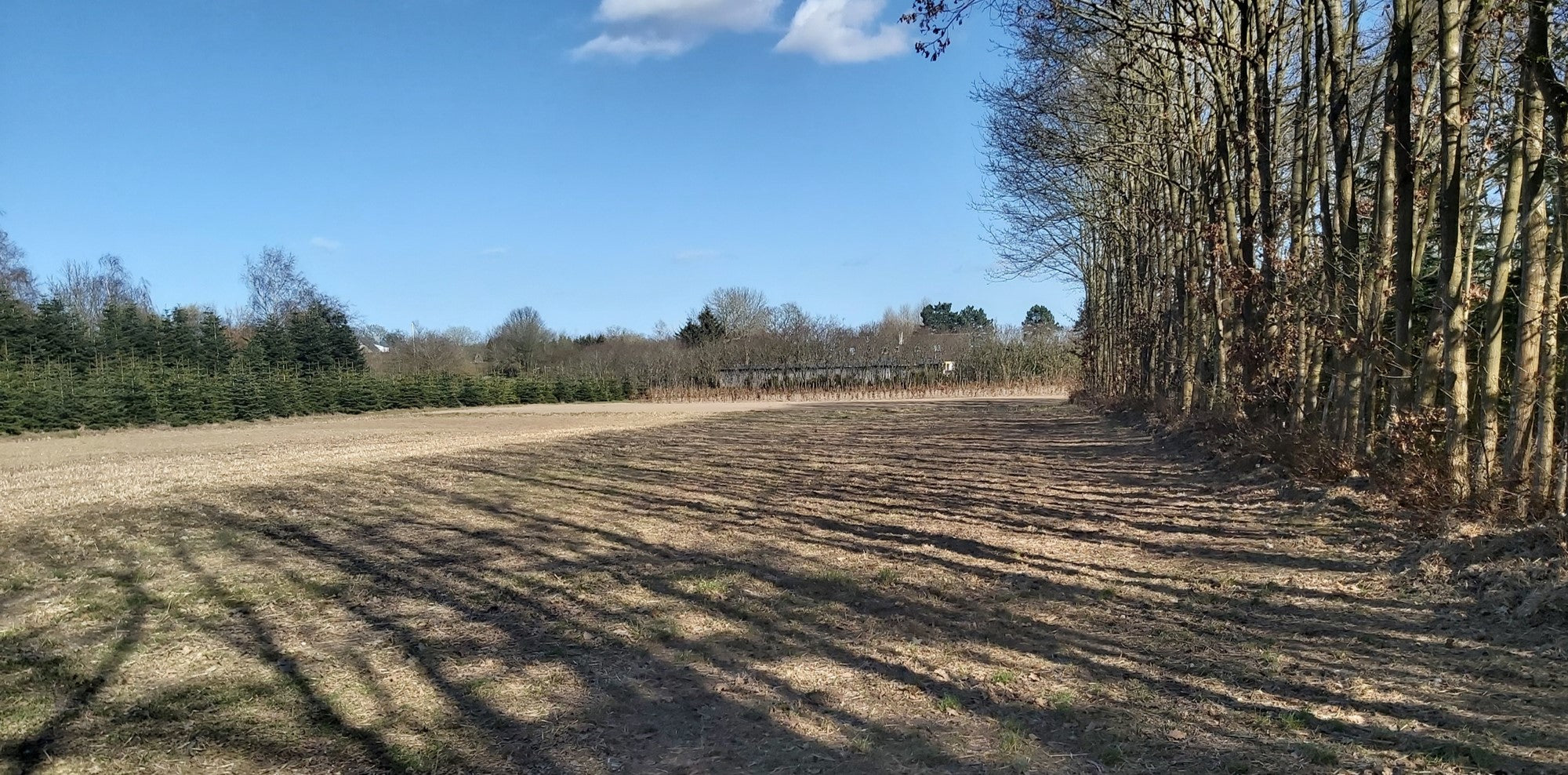
Do you find our approach interesting?
Why we restore symbiosis in Radically Regenerative
A well-functioning ecosystem encompasses billions of organisms, working in close relationships. Every living thing has a part to play for the wellbeing of the whole. In life and in death.
Above the soil, plants take in carbon and nitrogen from the air. They then swap these elements in their roots, with fungi and bacteria for minerals in the soil, like phosphorus. This process helps to lock in carbon from the atmosphere. Arthropods, nematodes and protozoa feed on fungi and bacteria, which are in turn fed on by birds, other insects and animals. We are part of this process and our digestive system is designed to eat the animals.
Plants and especially grasses evolved with ruminant animals (such as cows). Ruminants can properly digest plant matter, using four stomachs to ferment the tough cellulose and disarm the anti-nutrients that all plants use to make sure that nobody but ruminants eat them.
Ruminants of course need grasses to live. But likewise, to maintain healthy soils, grasses need animals to graze them. For this grazing to work properly, animals need to behave like a herd – recall documentaries of thousands of wildebeests feeding while milling in a pack to avoid predation from lions. They’ll stay in one place, trample and manure, then move on in a tightly formed pack; not coming back for a month or more. This short disruption and fertility, together with a longer rest time is what the plants want. They recover stronger, together with the ecosystem in all its cooperative associations.
We work with nature’s method to sequester carbon from the atmosphere at a higher rate than can be done so with trees or by leaving nature alone. This approach is called Holistic Grazing. Every pass of the animals is planned for a short duration. The duration they stay in an area is based on experience and depends on:
- Temperatures (historic and predicted)
- Rainfall (historic and predicted)
- Number of animals and type of animals (hens, cows, pigs)
- Size of paddock (we encourage animals’ desires to be closer together with electric fencing)
- Length of plants and time since previous recovery
- Types of plants
This is a complex formula that cannot be written down or commoditised. It depends on the farm and the plan for grazing will not be the same as a neighbour a few kilometres down the road.
Below: Two cycles of holistic grazing with our hens - the ecosystem is boosted by animal disturbance
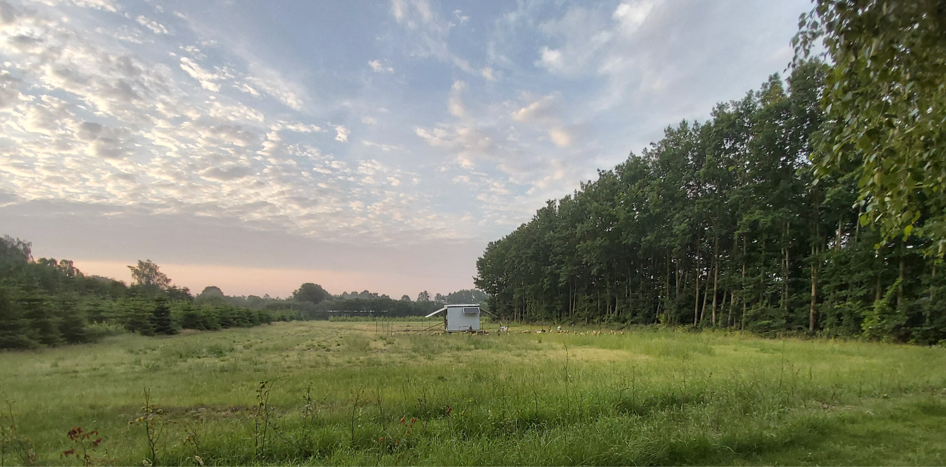
The results of Radically Regenerative holistic grazing at Søagergård
Using holistic grazing for the last three years, we have seen the soils begin to heal from over a century of ploughing and other abuses. Insects (including our bees) have been attracted by a diverse mix of flowering plants and other life classed as “weeds” and “pests”. Some of this plant life has been waiting as seeds for up to a hundred years for the opportunity to sprout and thrive.
Birds like falcons and buzzards have returned to our small 10-hectare plot so close to the city, attracted by small prey animals. The small animals have thrived on undisturbed soils, a dense cover of plants for protection, as well as natural food such as grasshoppers and worms.
Badgers and hedgehogs have also made homes here. Soil compaction (a measure of how alive or dead a soil is), has decreased from high in 2020, to medium in 2022. This is a long process, but if left to nature it would take a century to build an inch of topsoil (a measure of soil health recovery). Conversely, we believe we can build an inch within a decade.
Therefore, we find that working with domestic animals is an intrinsic part of ecosystem recovery and could not be done effectively if pockets of the modern world were to become “off limits” to people, for the purposes of “rewilding”.
Below: One year of holistic grazing - abundance returning, soil health improving
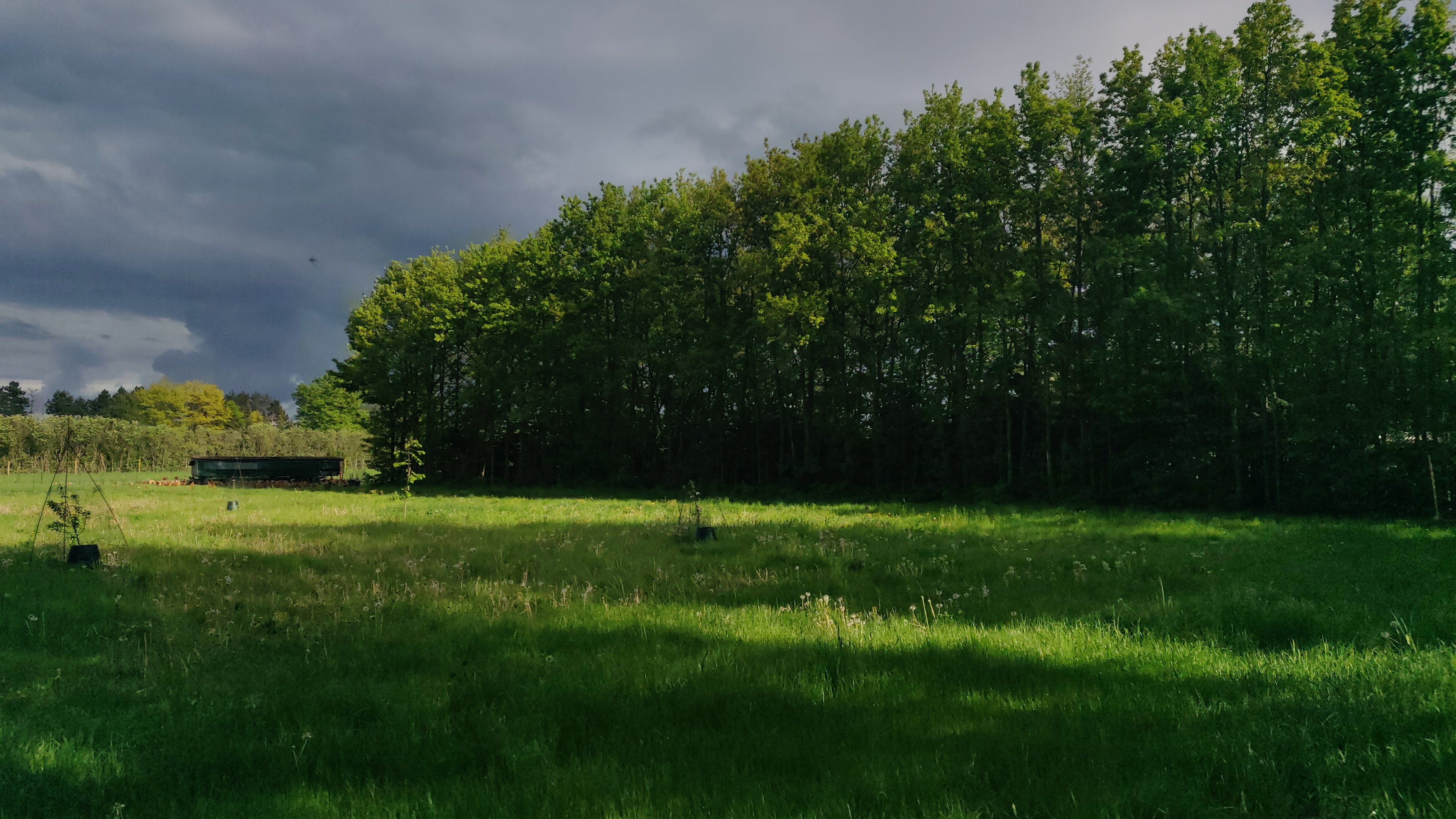
Radically Regenerative is not sentimental about nature and our role in it
This multi-layer soil-animal-human food web is a vibrant and diverse community. Imagine a town where all the inhabitants have different, interdependent roles. They work in cooperation. Cooperation may look like “I pick some flowers for you and in return, you give me some strawberries you grew”. Or it may be “you left a dessert to cool on your window, and it was taken and eaten by the neighbourhood’s kids”. The latter may not sound like cooperation, but it is just like nature works. We have to remember that there is no sentimentality in the cycle of life.
Treating nature with the sentimentality of human interactions creates artificial divides between what can be eaten and what is taboo. Plants have nervous systems and react to the outside world (such as to music), but because they are not similar to us, it is deemed fine for them to be treated with contempt in monocultures. These monocultures typically kill many animals in the process (see following section, below).
We had sentimental views, having come from a city. We were largely disconnected from nature when we began our regenerative journey in 2020. It took us a while to listen to what nature was telling us. For example, when we wanted to keep a sow and her grown piglets together in one large paddock in our forest, nature told us otherwise. The sow intimidated her own offspring into leaving. The sow wasn’t a “bad mother”, she was thoughtful in protecting the genetic diversity in the herd. Like with its ancestor, the wild pig’s offspring are encouraged to leave the herd to make a life elsewhere.
As part of our cooperation with animals and their natural instincts, we hope that we give them an exceptional life. We honour them and their work by making sure that we use everything they give us when they die. As part of the natural cycle of life, they nourish us and our own internal ecosystems, which evolved with animals by our sides. And the cycle continues.
Below: Our pigs are heritage breed, meaning they behave more like their ancestors - wild boar. We give them a habitat that matches their instincts - a large forest. Our pigs help nature by removing weak trees, promoting new and robust growth
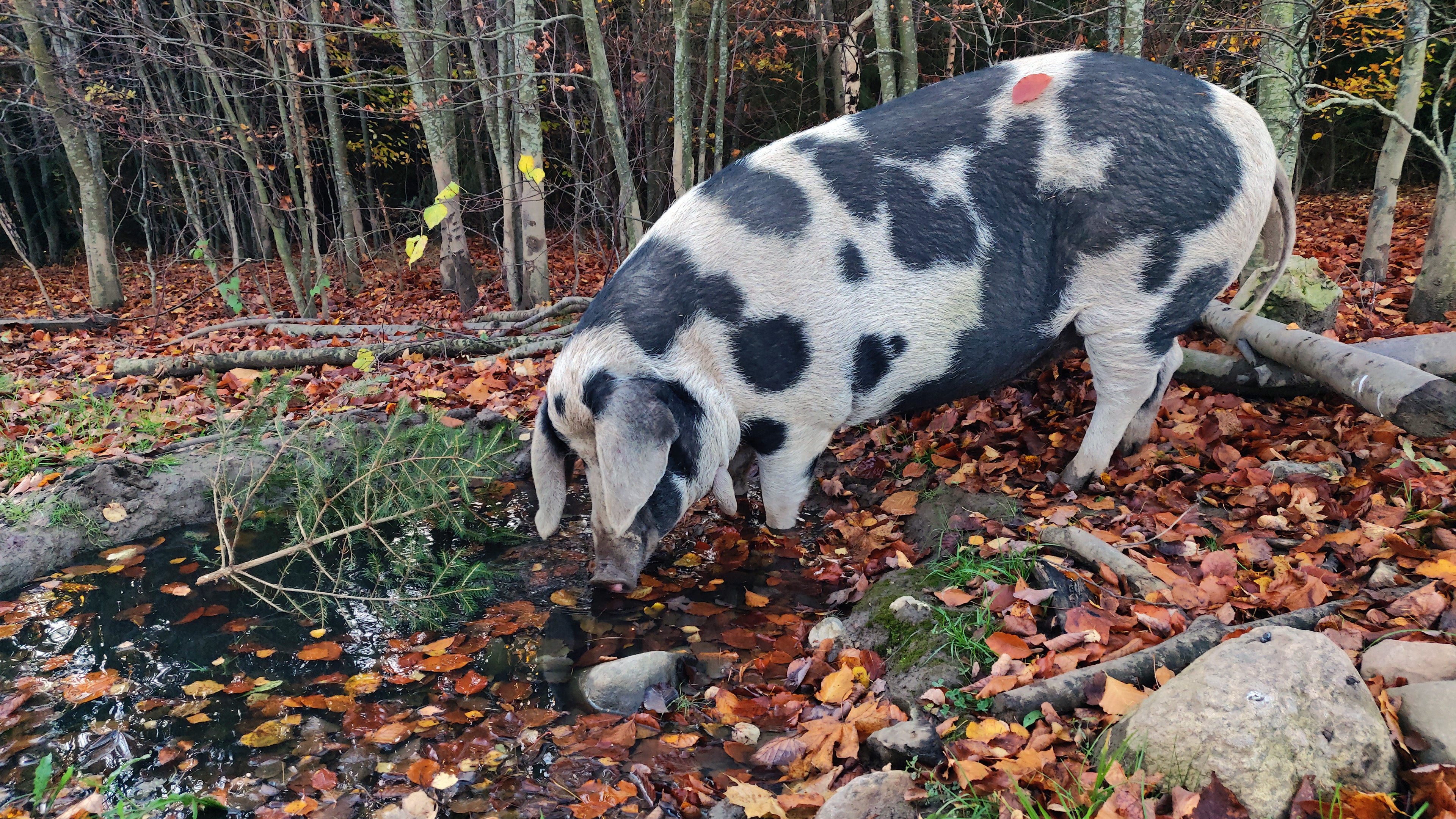
Do you find our approach interesting?
Radically regenerative is not a badge that a corporation can wear to mask its exploits
While we are not sentimental about nature and our role in it, we condemn the highly controlling, mechanistic and sadistic animal and plant rearing practices exhibited by “big farmer’s” corporatisation of life. High-publicity marketing attempts need to be seen for what they are. We believe they largely serve to divert attention from, and gain acceptance for, their far-reaching conventional practices.
As discussed earlier, a healthy community needs diversity. Conversely, in the pursuit of increased yields, modern agriculture has fought for a hundred years to decrease diversity:
- In plants, through genetic manipulation to the point where plants cannot survive without support from herbicides, fungicides, pesticides and genetic manipulation
- In animals, through breeding to reach maximum size as quickly and cheaply as possible
While we are all largely aware of how animals are treated in the pursuit of profit, the role of plant agriculture in destroying life and diversity has not had the scrutiny it now deserves. For example, harvesting a hectare of grain kills around 700 animals – sliced, diced and mashed up in the machinery of the harvester. This isn’t to mention all the beneficial insects and our bee populations nosediving because of indiscriminate spraying of poisons that are known to be harmful to all life – by the farmers that use them, by the companies that produce them, and by complicit blind eye of the governments that approve them.
Nature is telling us this isn’t right, giving us all the new diseases of civilisation in humans, epidemics of every kind of animal flu and plant pest. Civilisation has largely ignored these warnings, creating the necessity for more and more drastic interventions by “big farmer”.
The entirety of modern life can be equated to our civilisation’s highly mechanistic and controlling approach to nature. It is akin to building a sand castle on the beach, then desperately wafting away the sea in an effort to prevent the inevitable high tide. Many of us are leading this life of “quiet desperation”. We hope to help people in our community to reconnect with their humanity and the intrinsic nature that is inside us all. Contact us if you feel you would benefit.
Below: Our hens follow our cows, moving at least weekly in their mobile chicken coop. Our hens break up manure and eat cow pest larvae and flies. Our animals break the life cycle of pathogens in a natural way. Pathogens proliferate in animal and plant monocultures of corporatised agriculture
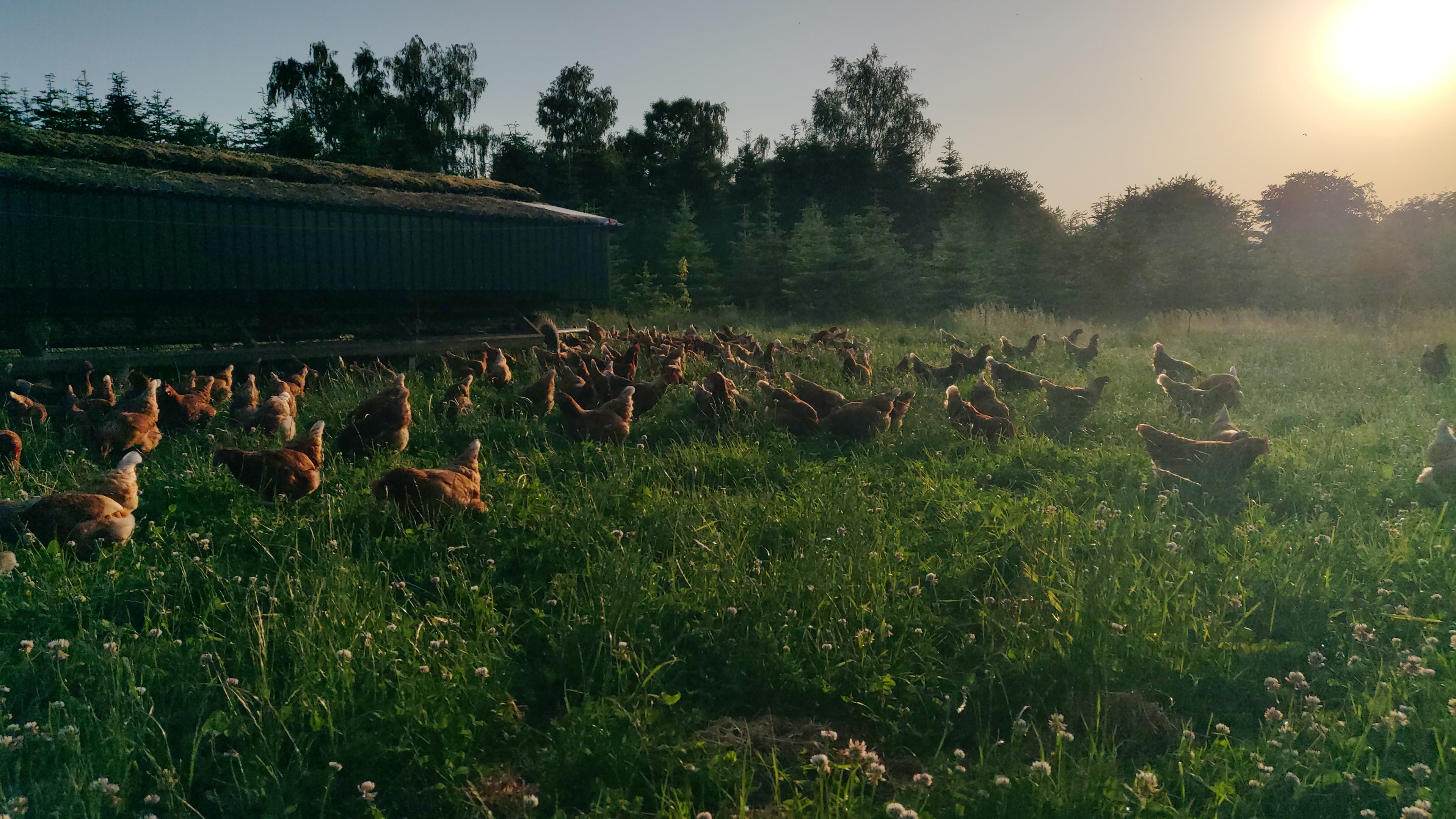
Use your judgment when referring to "regenerative"
To break the marketing spell, we encourage you to ask these questions:
- Are the vast majority of their operations using holistic grazing or animal manure from holistic grazing?
- If planting crops, is a no till/plough system used that never leaves soil bare or displaced? Is animal manure used as fertiliser?
The views expressed in this synopsis are opinions. We encourage you to not just take our word for it and dig deeper. The resources and experts you may want to review are not the ones you will see quoted on TV or in polished advertorials masquerading as journalism in newspapers. We suggest you start with Joel Salatin and his Polyface Farm. For a bit more detail on holistic grazing, please see Allan Savory and The Savory Institute.
Below: As with our pigs, our cows and their calves are never separated during their formative months. We honour their contribution towards regenerating the ecosystem in many ways, including being compassionate to their needs beyond food, water and shelter
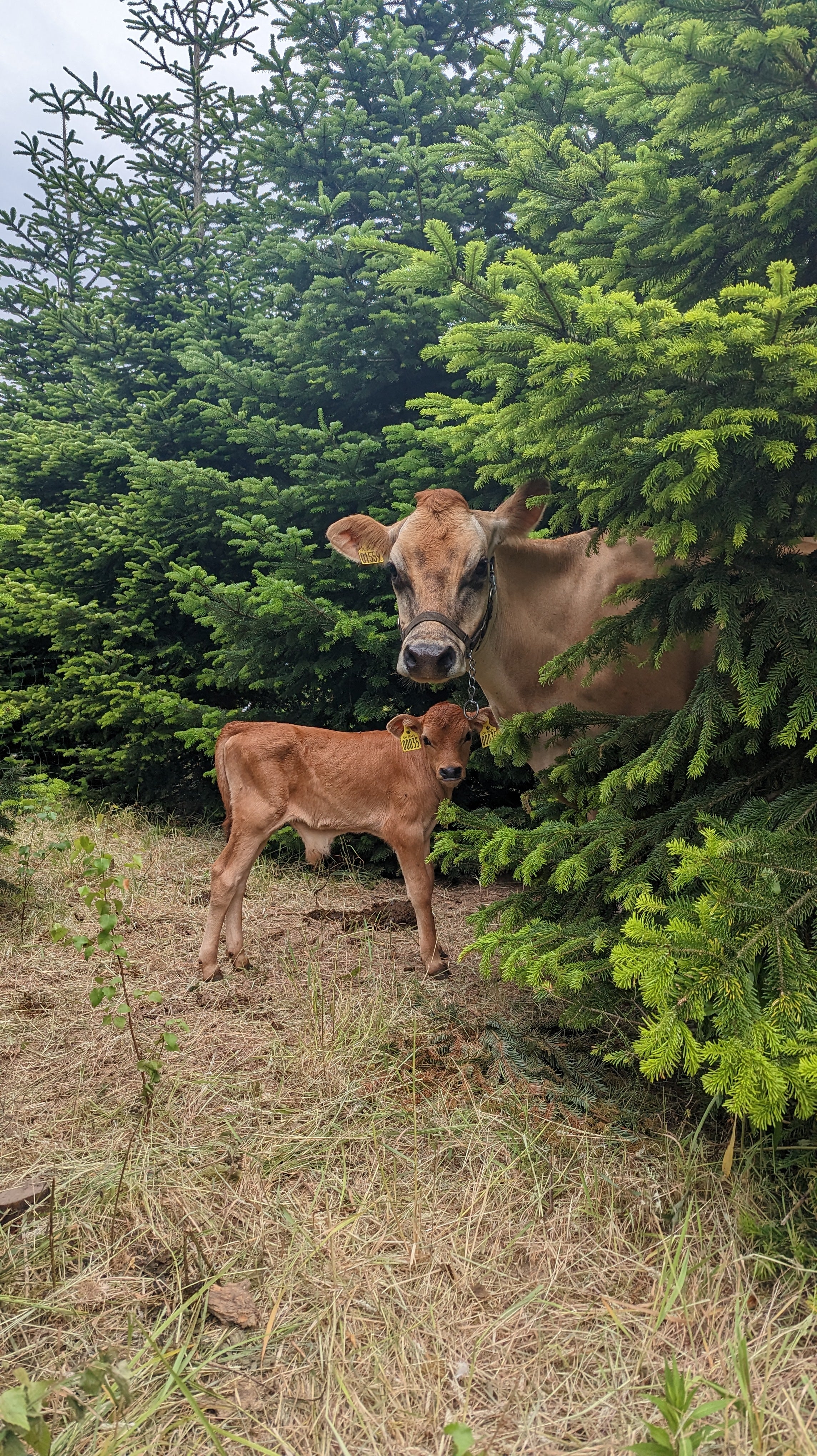
Brief FAQ on Radically Regenerative
Is it a cure for all the world's problems?
No. Although it is fashionable to think in black and white, we do not believe that regenerative agriculture is the only solution for restoring ecosystems.
Can any small or local producer be called regenerative if they don't do any holistic grazing?
No, but supporting the human community is nevertheless important.
Is it "organic plus"? And should it have a certification?
No. We are strongly against commoditisation and commercialisation by “big farmer” of the descriptor “regenerative agriculture”. If accreditation occurs, it will meet the same fate as organic. We believe that organic was hijacked by big business, watering down the standards, while forcing out truly organic principles and innovation. The organic standard is a private enterprise but is protected by the state.
Does it scale and have there been any long-term results?
Yes. There are examples from smaller than 10 hectares to a million acres in America and Africa. There have been people using regenerative agriculture approaches since the 1960s, so there are examples of long-term results. See Allan Savory, Gabe Brown, Ray Styer, Joel Salatin, Greg Judy
Is it fully developed in terms of infrastructure, critical mass and knowledge?
No. This is why it is exciting. The innovation of many small players makes for more fitting solutions locally. We are also learning as we go. It remains a balancing act between being perfect and making sure people are comfortable to come along with us on the evolution.
Why are your products so expensive compared to the supermarkets or my local farmer?
The time and effort that goes into the final product you receive, whether that is our eggs, pork, honey, raw milk or grass-fed beef, should be rewarded properly. People may not see all the behind-the-scenes work (such as moving animals daily, planning grazing, designing and building highly mobile infrastructure that doesn’t exist anywhere else), but it is fundamental to our approach. We think that the more people revere and value the food in front of them, the more they will savour the experience and ultimately the good life of the animal.
Will we run out of food if we abandon conventional agriculture for regenerative?
No. Consider that the EU estimates that 40% of food is wasted in Europe, never being eaten – crops rotting on the fields, animals dying in stuffed transports to slaughter, food spoiling in transport and supermarkets, and in the home fridge, because it is cheap and easily replaceable. To us, this highlights the devaluing of food through over-intensification, commoditisation and globalisation. Regenerative agriculture is much less intensive than conventional practices (including organic) and in our case, we only serve our local market and our customers use and enjoy everything our animals give us.
Do cow farts make climate change?
Not cows eating grass (instead of grain), raised naturally outdoors (instead of crowded barns with hundreds of cows), close to their communities (instead of being driven hundreds of kilometres to Germany to be slaughtered and then back to all corners of Denmark).
© 2023 Søagergård Regenerative Agriculture. All rights reserved. Errors and omissions excepted.
Below: We have been overwhelmed by our community’s support and thank everyone who has contributed to our success so far. We continue to strive for better, using our ethics and principles as a basis for improvement. We achieve meaningful change because we are small and dedicated. We are not tied to costly loans, infrastructure, shareholders or old thinking, where meaningful change is bad for the bottom line
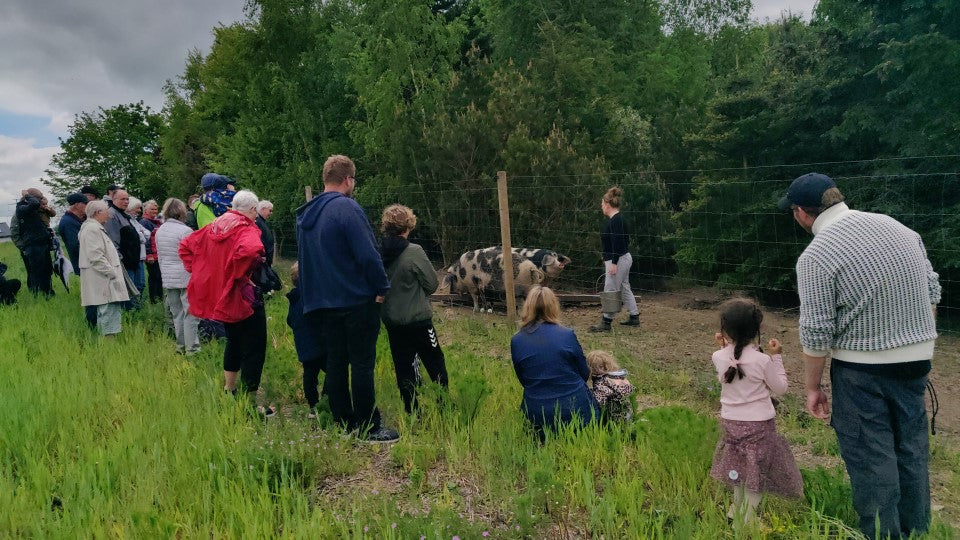
Do you find our approach interesting?
